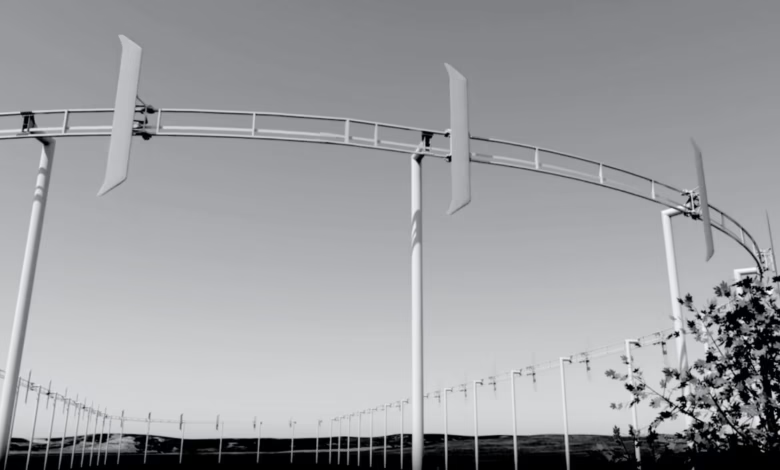Bill Gates-Backed Airloom Launches First Power Plant

▼ Summary
– President Trump’s opposition and rising costs ($61 per megawatt-hour in 2023) are creating challenges for the wind power industry.
– Airloom Energy, a wind startup, believes its innovative design can achieve cost competitiveness without subsidies, even at low production volumes.
– Airloom’s design replaces traditional turbine blades with shorter blades on a cable-driven oval track, standing at just 60 feet tall—much shorter than conventional turbines.
– The company has begun constructing a pilot site in Wyoming, aiming to generate 150 kilowatts, with plans for commercial-scale deployment by 2027 or 2028.
– Airloom is targeting data centers and military bases as early customers, offering faster deployment timelines compared to traditional wind turbines.
Wind energy faces growing challenges, but one innovative startup backed by Bill Gates believes it has a solution that could redefine the industry. Rising costs and shifting political winds have created obstacles for traditional wind power, with onshore projects now averaging $61 per megawatt-hour, a notable increase after years of declining prices.
Neal Rickner, CEO of Airloom Energy, acknowledges these hurdles but remains confident his company’s unconventional approach could break through the noise. Unlike conventional turbines with massive spinning blades, Airloom’s design features multiple shorter blades mounted on a cable system that moves along an oval track. This modular setup stands just 60 feet tall, a fraction of the height of standard turbines, while promising comparable energy output.
The company recently broke ground on its first pilot site near Laramie, Wyoming, marking a critical step toward proving the technology’s viability. The initial system will generate 150 kilowatts, using components scalable to megawatt-level installations. Future iterations could feature tracks stretching 500 meters, supporting systems as large as 3 megawatts.
One standout advantage is land use efficiency. The space between Airloom’s tracks can accommodate solar panels or farming equipment, offering dual-purpose functionality that traditional turbines can’t match. Rickner envisions early deployments at data centers or military bases, sectors hungry for reliable, clean energy solutions.
While commercial-scale systems are now slated for 2027 or 2028, slightly later than initial projections, Airloom’s potential to deliver ahead of competitors has already drawn interest. Data center developers, in particular, are eager for alternatives amid supply chain delays stretching into the next decade.
“By 2030, we could be on our third system iteration,” Rickner notes. “That timeline is turning heads.” With its compact footprint and adaptable design, Airloom aims to prove that innovation, not just size, could be the key to wind power’s future.
(Source: TechCrunch)